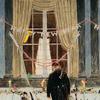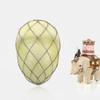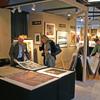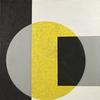
Duncan Phyfe: Master Cabinetmaker in New York
Renowned in his lifetime for his elegant designs and superior craftsmanship, Duncan Phyfe (1770–1854) remains to this day America’s most famous cabinetmaker. Opening December 20 at The Metropolitan Museum of Art, the exhibition Duncan Phyfe: Master Cabinetmaker in New York—the first retrospective on Phyfe in 90 years—will serve to re-introduce this artistic and influential master craftsman to a contemporary audience. On view will be furniture produced in Phyfe’s Fulton Street workshops that once stood on the site of the former World Trade Center. The full chronological sweep of his long and distinguished career will be featured, including examples of his best-known furniture from the period 1805-20, which was influenced heavily by early English Regency design; his more opulent, monumental, and archaeologically correct Grecian style of the late 1810s and 1820s, sometimes referred to as American Empire; and his sleek, minimalist late work of the 1830s and 1840s known as the Grecian Plain style, based largely on French Restauration furniture design. IMAGE SHOWN: Attributed to Duncan Phyfe, Card Table, ca. 1820. Rosewood and satinwood veneers, mahogany, gilded gesso and vert antique, gilded brass; secondary woods: yellow poplar, white pine, 29 x 36 x 17–3/8 in. The Brant Foundation, Inc., Greenwich, Connecticut

__Portrait_of_a_Young_100x100_c.jpg)












